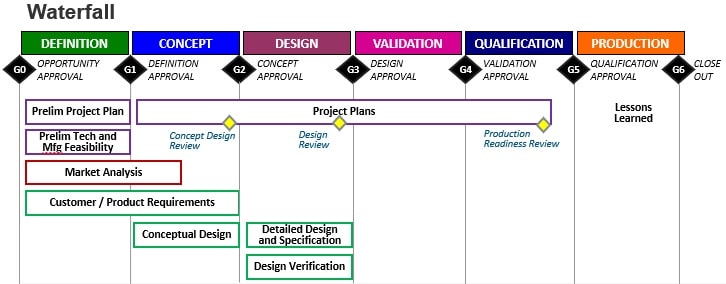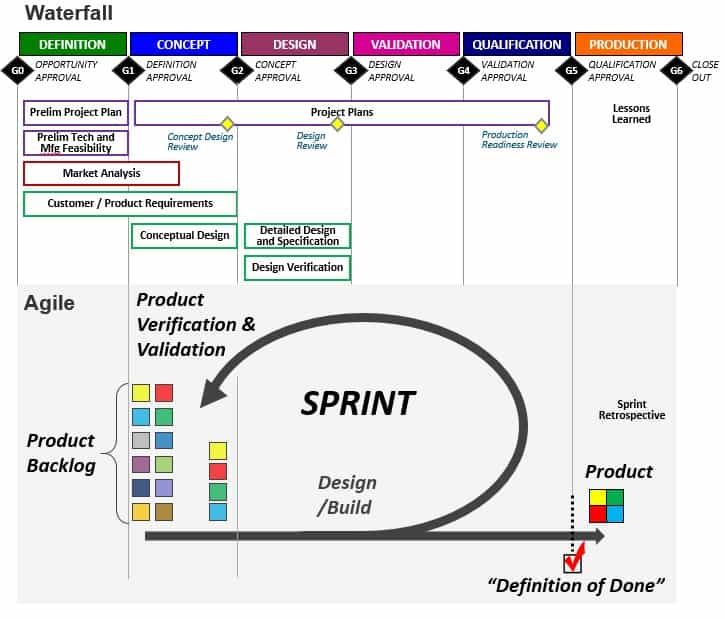Benefits of Comparing Agile with Waterfall
Previous articles have covered a proposed waterfall product development phase/gate process. This article will compare and contrast waterfall with Agile product development, especially with respect to the front-end of the process.
Let’s start with a proposed waterfall product development phase/gate process. (The process below implies a hardware product, however, it can be considered any waterfall process for now.)

Let’s add some of the deliverables and activities in the definition and concept phases:

The foundational objective of Agile, and performing sprints, is to execute high-value elements of the product backlog – turning product backlog into product. Also emphasized in Agile is to establish a closed-loop with the customer and/or product manager.
Let’s add an Agile graphic and compare and contrast some of the front-end elements.

It can be seen that the product backlog aligns with the concept phase. Therefore, let’s consider the applicability of some of the waterfall deliverables up to this point:
- Definition – ensure the the agile/scrum development effort is being targeted on the most valuable product or service. If so, a project charter or other business case documentation might be warranted.
- Project Plan – describes how the project will be managed. Agile/scrum process documentation could therefore be considered equivalent.
- Preliminary Technical and Manufacturing Feasibility – worth considering if feasibility is a concern.
- Market Analysis – helps to understand your competitive landscape and meet market needs – this is potentially important background information for the product backlog.
- Customer / Product Requirements – directly applies to product backlog, in addition to user stories.
- Conceptual Design – in agile/scrum, a customer might be shown a conceptual design, prototype or mock-up for early validation purposes.
- Definition of Done – ultimately, the release to the customer is determined by completing development as defined by the teams “Definition of Done”.
Any process is as strong as it’s weakest link. While we want to avoid confusing the two methodologies, it’s worth keeping in mind some deliverables in preparation for the executing agile process and product backlog.
